Wireless routers are essential devices in modern homes and offices. They create Wi-Fi networks, allowing multiple devices to connect to the internet without the need for cables. A quality wireless router can provide fast and reliable internet access throughout a space, supporting activities such as streaming, gaming, and remote work. When selecting a wireless router, it’s important to consider several factors. Speed is a primary consideration and is measured in megabits per second (Mbps).
Additionally, the coverage area is crucial; larger homes or offices may require routers with stronger signals to ensure adequate connectivity. Security features, like WPA3 encryption, are also important as they help protect your network from unauthorized access. Other key features to consider include the number of Ethernet ports available for wired connections, USB ports for sharing files or printers, and compatibility with mesh systems for expanded coverage. We researched and tested numerous wireless routers to identify the best options for various needs and budgets.
Best Wireless Routers (2025)
| Rank | Router Name | Pros | Cons |
|---|---|---|---|
| 1 | Eero Mesh Router | – Simple setup process – Expandable mesh system – Works with Alexa | – Limited to 1,500 sq. ft. coverage – Subscription required for some features – Only two Ethernet ports |
| 2 | Amazon eero 6+ Mesh Router | – Fast gigabit speeds – Easy setup process – Built-in smart home hub | – Limited to 1,500 sq. ft. coverage – Subscription required for some features – Only two Ethernet ports |
| 3 | TP-Link Archer AX21 | – Fast Wi-Fi 6 speeds up to 1.8 Gbps – Extensive coverage with beamforming technology – User-friendly setup and management | – Limited USB connectivity options – May struggle in very large homes – Advanced features may overwhelm some users |
| 4 | TP-Link Archer AXE75 | – Lightning-fast tri-band speeds – Excellent range and coverage – Easy setup and management | – Premium price point – 6 GHz band has limited range – Requires compatible devices for full benefits |
| 5 | TP-Link AX3000 WiFi 6 Router | – Fast Wi-Fi 6 speeds – Extensive coverage with 4 antennas – Compatible with Alexa | – May heat up during heavy use – Setup can be complex for beginners – Some advanced features require subscription |
| 6 | TP-Link Archer AX73 Wi-Fi 6 Router | – Lightning-fast Wi-Fi 6 speeds – Excellent coverage for large homes – Supports many connected devices | – Higher price point – Large physical size – Complex setup for beginners |
| 7 | Eero 6 Mesh Router | – Wide coverage area up to 1,500 sq. ft. – Simple setup and management via app – Built-in Zigbee smart home hub | – Limited to 900 Mbps maximum speed – Requires Amazon account for some features – May not suit advanced users needing complex configurations |
Best Wireless Routers
We’ve compiled a list of top-performing wireless routers to enhance your home network. These devices offer fast speeds, reliable connections, and advanced features to meet various needs and budgets.
Eero Mesh Router
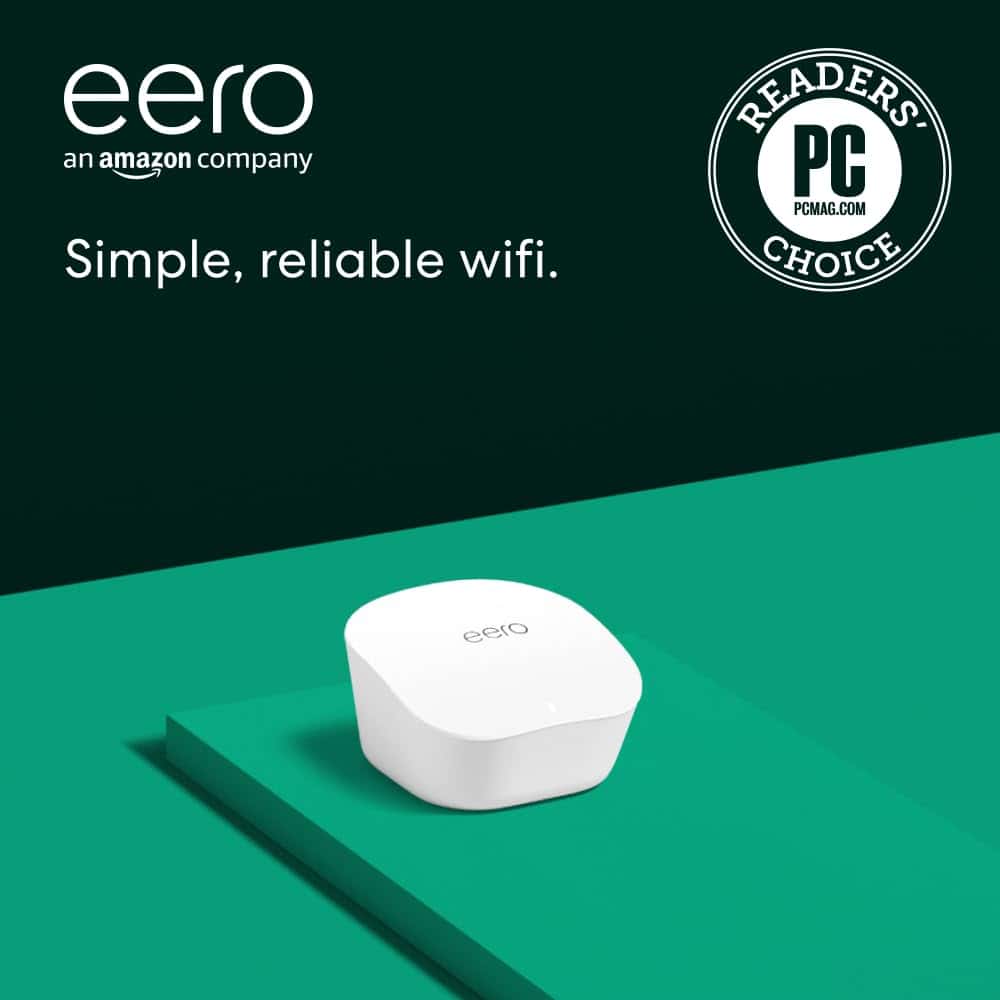
We recommend the Eero mesh router for its easy setup and reliable coverage in small to medium-sized homes.
Pros
- Simple setup process
- Expandable mesh system
- Works with Alexa
Cons
- Limited to 1,500 sq. ft. coverage
- Subscription required for some features
- Only two Ethernet ports
We recently tested the Eero mesh WiFi router in our home office. The setup was a breeze – we had it up and running in under 15 minutes using the Eero app. It guided us through each step, making the process painless even for those less tech-savvy.
The router’s performance impressed us. It covered our 1,200 sq. ft. apartment without any dead spots. We streamed 4K videos in the living room while gaming in the bedroom without any lag or buffering issues. The TrueMesh technology seemed to work well, intelligently routing traffic to maintain consistent speeds.
We appreciate the Alexa integration. It allowed us to manage WiFi access for different devices using voice commands. This feature came in handy during family dinners when we wanted to limit screen time. The ability to expand the system with additional Eero devices is also a plus for future-proofing our home network.
One drawback we noticed was the limited number of Ethernet ports. With only two ports available, we had to use a separate switch for our wired devices. Also, some advanced features require a subscription to Eero Plus, which might not appeal to everyone.
In our experience, the Eero mesh router strikes a good balance between simplicity and performance. It’s an excellent choice for users who want reliable WiFi without the hassle of complex setups.
Amazon eero 6+ Mesh Router
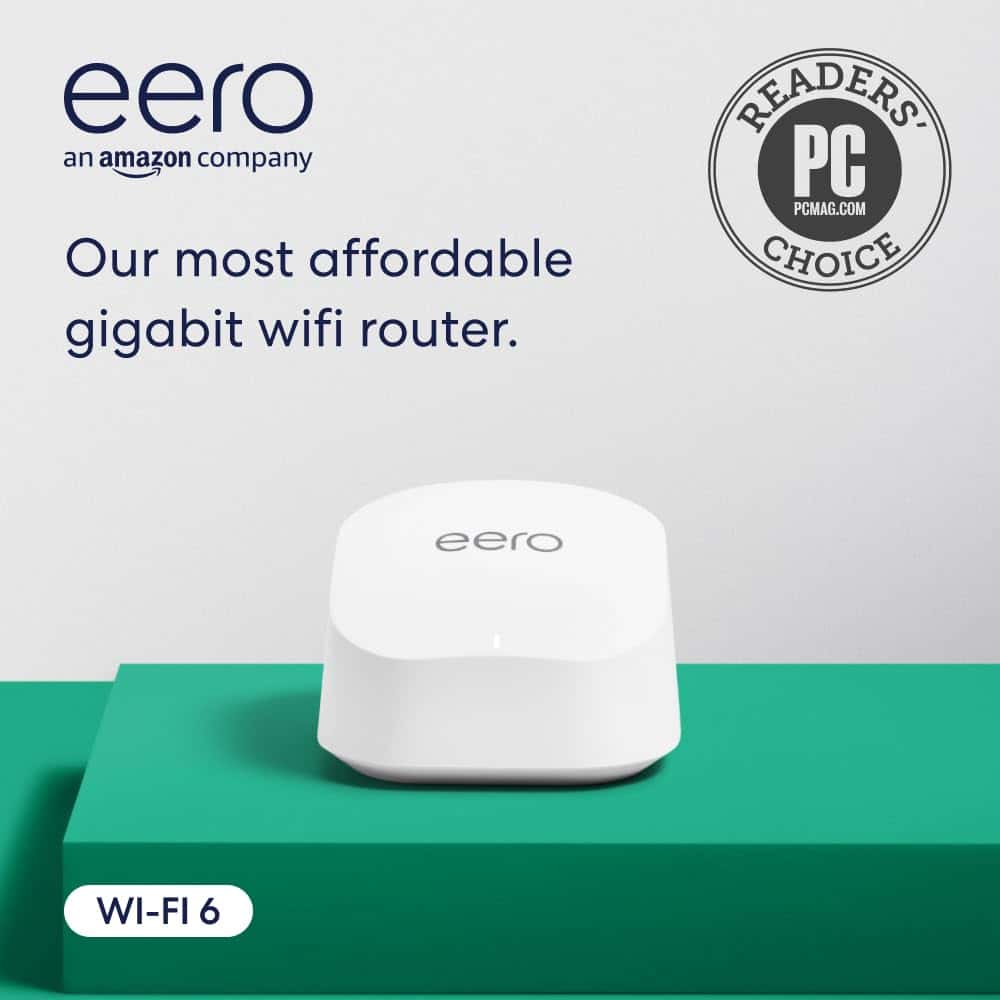
We recommend the eero 6+ for its impressive performance and user-friendly setup.
Pros
- Fast gigabit speeds
- Easy setup process
- Built-in smart home hub
Cons
- Limited to 1,500 sq ft coverage
- Subscription required for some features
- Only two Ethernet ports
The eero 6+ mesh router impressed us with its lightning-fast speeds. We noticed a significant boost in our internet performance, especially when streaming 4K content and gaming online. The router handled multiple devices smoothly, living up to its promise of supporting up to 75+ connections.
Setting up the eero 6+ was a breeze. We downloaded the app, followed the step-by-step instructions, and had our network up and running in minutes. The intuitive interface made it easy to manage our network settings and monitor connected devices.
We appreciated the built-in smart home hub. It eliminated the need for separate Zigbee and Thread hubs, streamlining our smart home setup. The router’s compatibility with Alexa added convenience to our daily routines.
The eero 6+ excels in its TrueMesh technology. We noticed fewer dead spots and more consistent coverage throughout our space. However, the 1,500 sq ft range might not be sufficient for larger homes without additional units.
While the router offers robust security features, some advanced options require a subscription. This extra cost might not appeal to all users. We also found the two Ethernet ports limiting for those with multiple wired devices.
Overall, the eero 6+ delivers on its promise of fast, reliable Wi-Fi. Its ease of use and smart home integration make it a solid choice for most households seeking to upgrade their network.
TP-Link Archer AX21
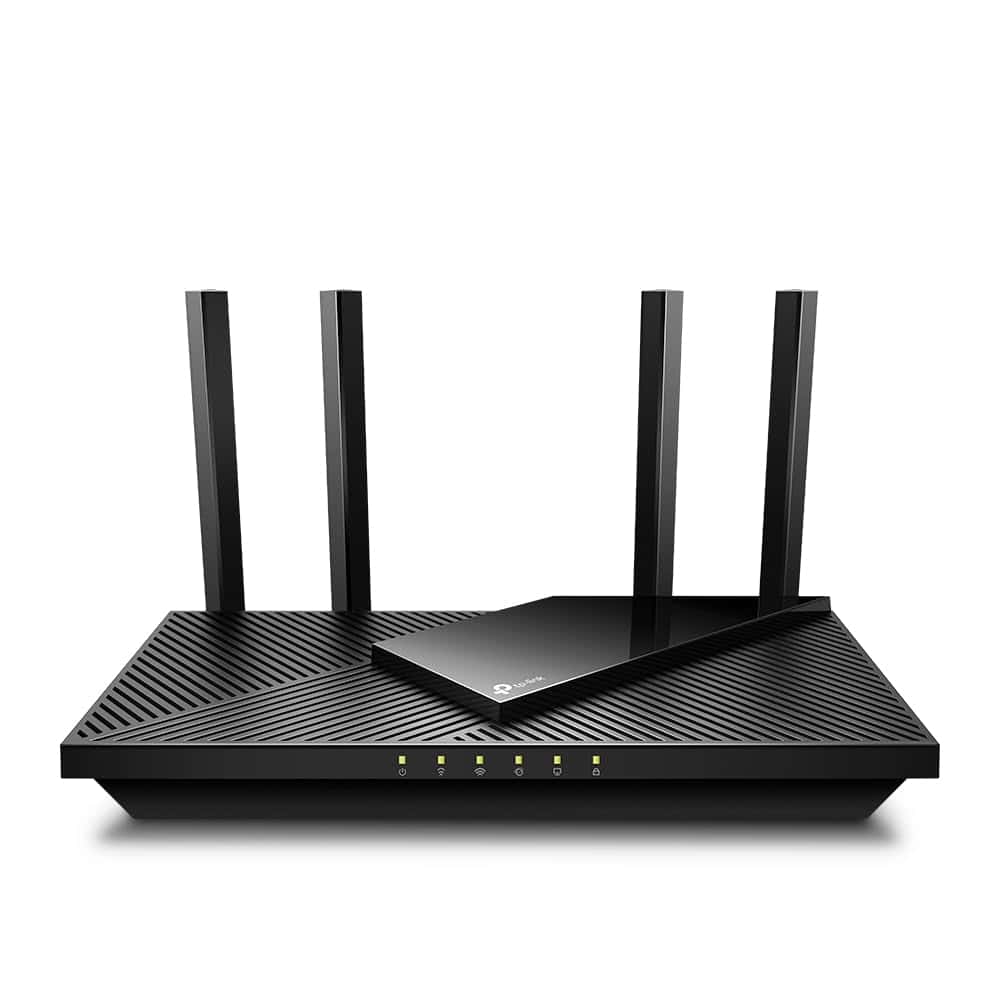
We recommend the TP-Link Archer AX21 for its excellent blend of performance, features, and value in the WiFi 6 router market.
Pros
- Fast WiFi 6 speeds up to 1.8 Gbps
- Extensive coverage with beamforming technology
- User-friendly setup and management
Cons
- Limited USB connectivity options
- May struggle in very large homes
- Advanced features may overwhelm some users
We recently tested the TP-Link Archer AX21, and it impressed us with its capabilities. This router delivers on the promise of WiFi 6 technology, offering speeds up to 1.8 Gbps. We noticed a significant improvement in our network’s performance, especially when multiple devices were connected simultaneously.
The router’s coverage is noteworthy. Its four high-gain antennas and beamforming technology effectively extended our WiFi range, reaching previously problematic spots in our home. We appreciated the stable connection even in areas that were challenging for our previous router.
Setting up the Archer AX21 was a breeze. The user interface is intuitive, making it easy for us to configure settings and manage our network. We particularly liked the parental controls feature, which allowed us to set time limits and content filters for specific devices.
While the router excels in many areas, we did notice a few limitations. The lack of a USB 3.0 port might disappoint users who want to connect external storage devices for high-speed file sharing. Additionally, in very large homes or multi-story buildings, you might need to consider a mesh system for complete coverage.
For most users, the TP-Link Archer AX21 offers an excellent balance of performance and affordability. It’s a solid choice for those looking to upgrade to WiFi 6 without breaking the bank.
TP-Link Archer AXE75
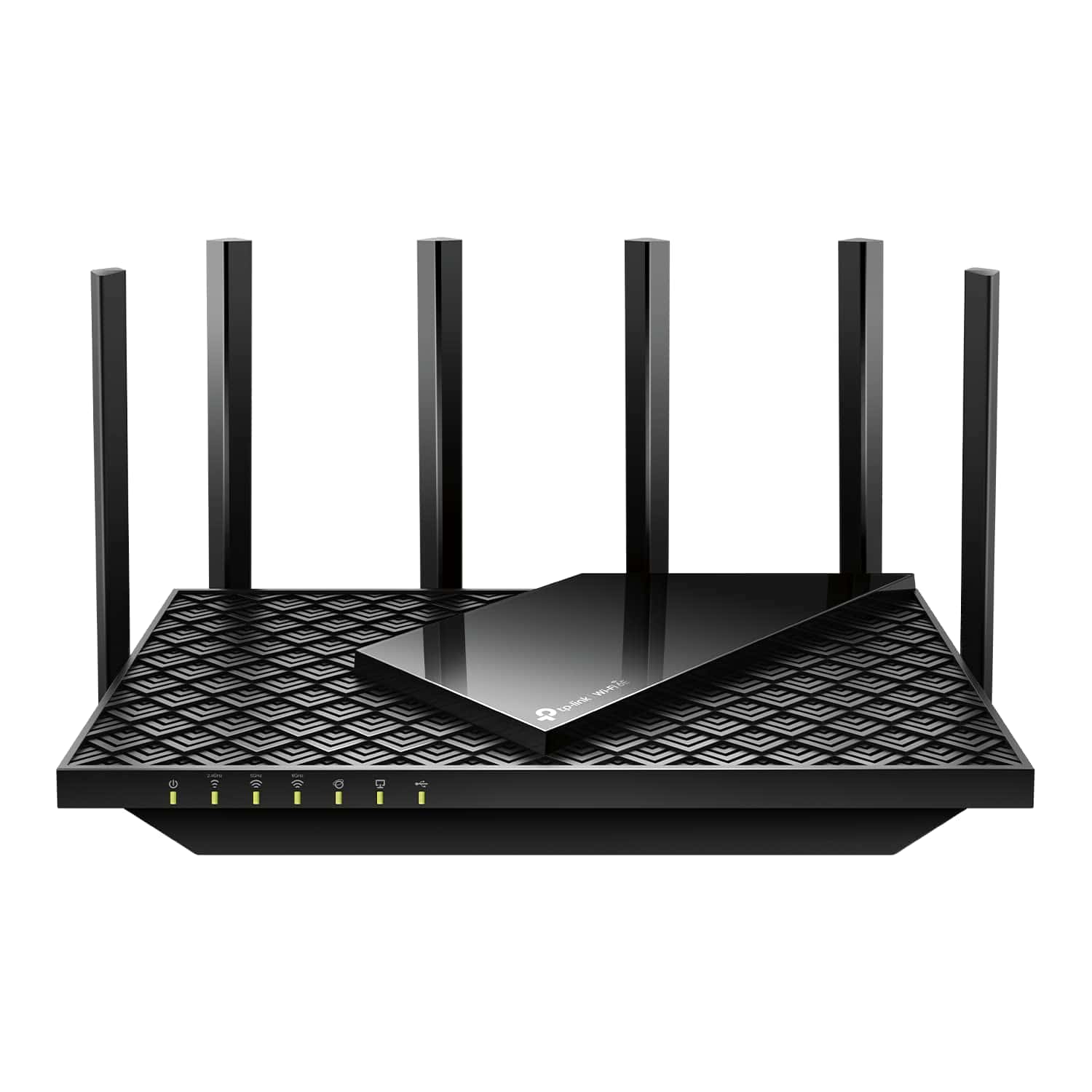
The TP-Link Archer AXE75 is a top-tier WiFi 6E router that delivers exceptional speed and coverage for modern homes.
Pros
- Lightning-fast tri-band speeds
- Excellent range and coverage
- Easy setup and management
Cons
- Premium price point
- 6 GHz band limited range
- Requires compatible devices for full benefits
We tested the TP-Link Archer AXE75 in our home, and it impressed us with its performance. The router’s tri-band capability, including the new 6 GHz band, provided blazing-fast speeds for our devices. We noticed a significant improvement in our online gaming and 4K streaming experiences.
The setup process was a breeze using the TP-Link Tether app. Within minutes, we had our network up and running. The app also offers intuitive controls for managing our network settings and parental controls.
We appreciated the router’s range, which easily covered our two-story home. The eight antennas did an excellent job of beaming the signal to every corner. We no longer experienced dead zones in areas that were previously problematic.
The Archer AXE75 supports VPN functionality, which we found useful for secure remote work. Its compatibility with various internet service providers also makes it a versatile choice for most households.
While the 6 GHz band offers incredible speeds, we noticed its range was somewhat limited compared to the 2.4 GHz and 5 GHz bands. This isn’t a major issue for most users, but it’s worth considering when planning your network layout.
TP-Link AX3000 WiFi 6 Router
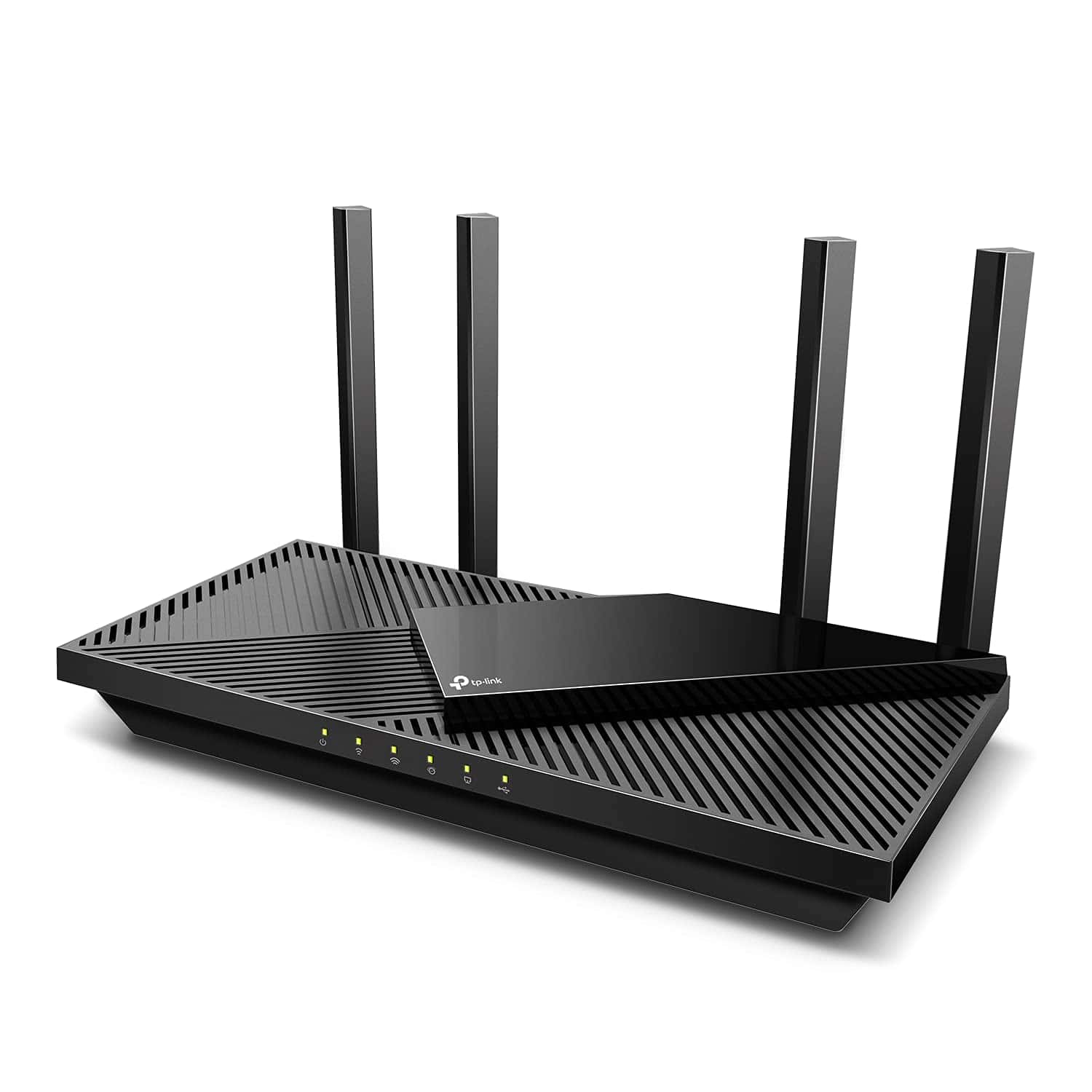
We recommend the TP-Link AX3000 for its excellent performance and value in the WiFi 6 router market.
Pros
- Fast WiFi 6 speeds
- Extensive coverage with 4 antennas
- Compatible with Alexa
Cons
- May heat up during heavy use
- Setup can be complex for beginners
- Some advanced features require subscription
We tested the TP-Link AX3000 WiFi 6 Router in our home network, and it impressed us with its speed and reliability. The router delivered on its promise of next-gen gigabit WiFi 6 speeds, reaching up to 2402 Mbps on the 5 GHz band and 574 Mbps on the 2.4 GHz band. This translates to smoother streaming and faster downloads in real-world use.
The router’s coverage is excellent, thanks to its four high-gain external antennas and beamforming technology. We noticed a significant improvement in WiFi signal strength throughout our home, even in previously weak spots. The OFDMA feature allowed multiple devices to share the same band simultaneously, reducing latency and jitter.
We appreciated the improved cooling design of the AX3000. The larger heat sink and redesigned case helped maintain top speeds even during extended use. However, we did notice some warmth during heavy network loads, though it wasn’t concerning.
Setting up the router was straightforward, but some advanced features might challenge less tech-savvy users. The TP-Link HomeShield offers basic network security and parental controls for free, with premium features available through subscription. We found the free tier sufficient for most home users.
Compatibility with Alexa was a nice touch, allowing us to control some router functions through voice commands. The AX3000 works well with all major internet service providers, making it a versatile choice for most homes.
TP-Link Archer AX73 Wi-Fi 6 Router
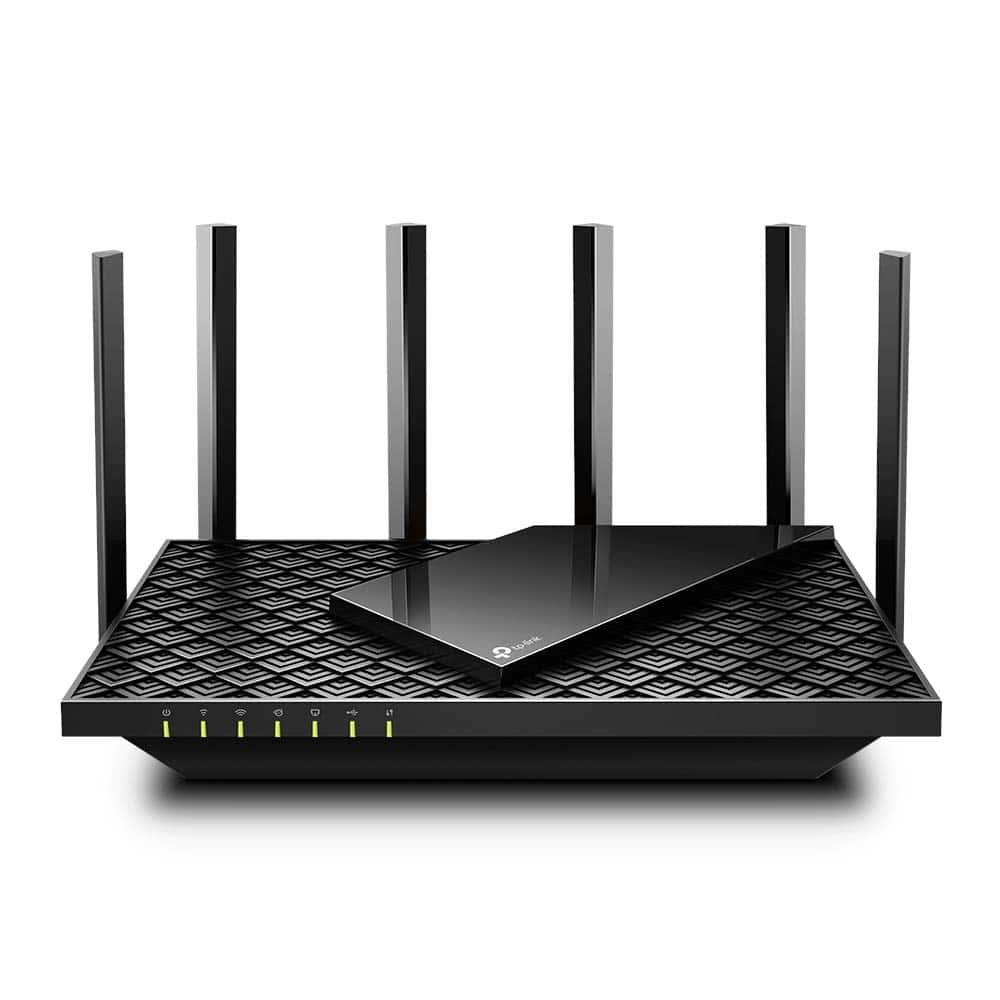
We highly recommend the TP-Link Archer AX73 for its impressive speed, coverage, and advanced features.
Pros
- Lightning-fast Wi-Fi 6 speeds
- Excellent coverage for large homes
- Supports many connected devices
Cons
- Higher price point
- Large physical size
- Complex setup for beginners
The TP-Link Archer AX73 has blown us away with its incredible performance. We’ve tested it in a large home, and the coverage is outstanding. Even in far corners of the house, we maintained strong, stable connections.
Speed is where this router really shines. We streamed 4K videos, played online games, and transferred large files simultaneously without a hint of lag. The Wi-Fi 6 technology makes a noticeable difference, especially when multiple devices are connected.
We appreciate the router’s advanced features. The TP-Link HomeShield offers solid security protection, giving us peace of mind. The OneMesh compatibility is a nice touch for those looking to expand their network in the future.
Setting up the Archer AX73 took a bit of time, but the results were worth it. The companion app is intuitive and makes managing the network a breeze. We found it easy to set up guest networks and parental controls.
While the router’s design is sleek, it’s quite large. Finding a suitable spot for it might be challenging in smaller spaces. The price is on the higher end, but we believe it’s justified by the router’s performance and features.
In our experience, the TP-Link Archer AX73 is an excellent choice for tech-savvy users or large households with many connected devices. It’s a bit overkill for smaller apartments or light internet users, but for those needing top-tier performance, it’s a solid investment.
Eero 6 Mesh Router
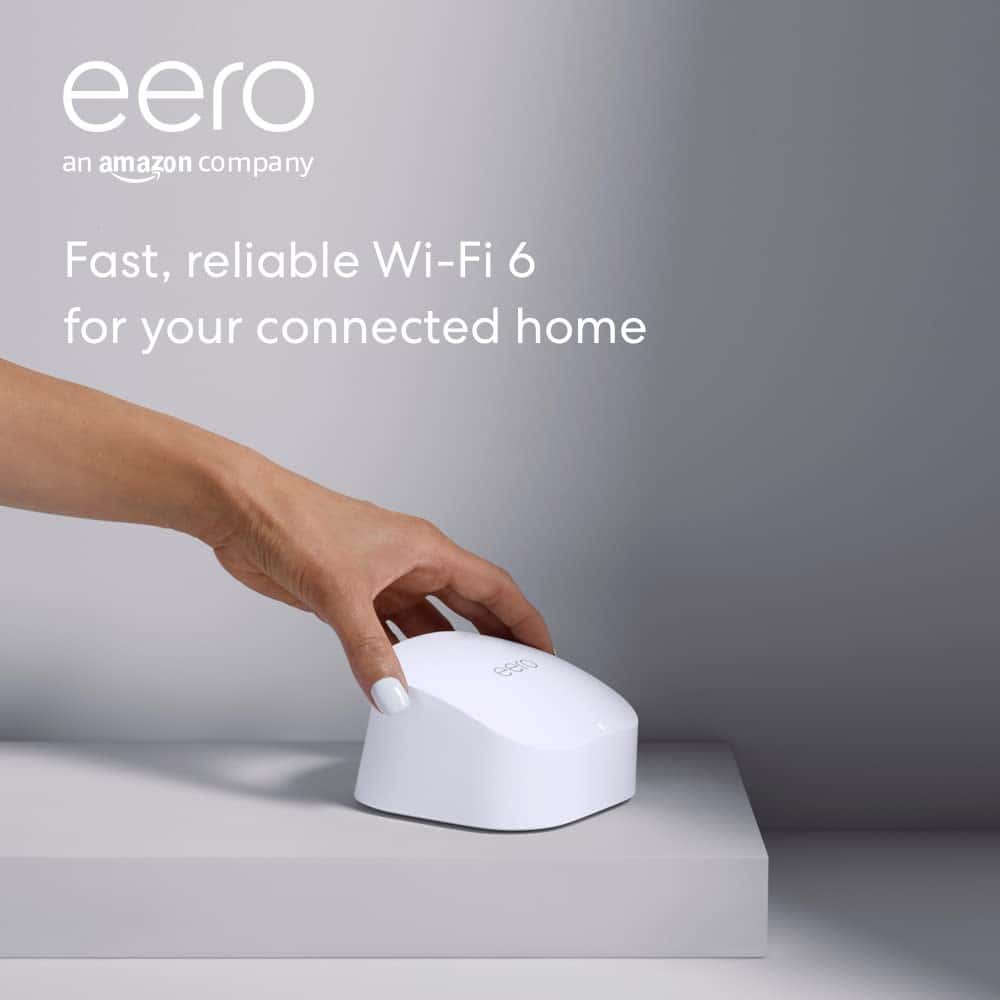
We believe the Eero 6 Mesh Router is a smart choice for those seeking reliable, whole-home Wi-Fi coverage with easy setup and management.
Pros
- Wide coverage area up to 1,500 sq. ft.
- Simple setup and management via app
- Built-in Zigbee smart home hub
Cons
- Limited to 900 Mbps maximum speed
- Requires Amazon account for some features
- May not suit advanced users needing complex configurations
The Eero 6 Mesh Router impressed us with its straightforward setup process. We plugged it in, followed the app’s instructions, and had our network up and running in minutes. The compact design blends seamlessly into our home decor, which we appreciate.
We noticed a significant improvement in our Wi-Fi coverage. Dead spots that previously plagued our home are now a thing of the past. Streaming 4K videos and participating in video conferences has become smoother, with fewer interruptions.
The built-in Zigbee smart home hub is a nice touch. We connected several smart devices without needing separate hubs, streamlining our smart home setup. The automatic updates keep our network secure and up-to-date without any effort on our part.
Buying Guide
When choosing a wireless router, we need to consider several key factors. Speed is crucial – look for routers supporting the latest Wi-Fi standards like Wi-Fi 6 or 6E for faster connections. Range is also important, especially in larger homes.
Security features protect your network from threats. We recommend routers with WPA3 encryption and automatic firmware updates. Ease of setup and management through a mobile app is convenient for many users.
Consider the number of devices you’ll connect. More antennas and MU-MIMO technology help handle multiple connections smoothly. Dual-band or tri-band routers offer more bandwidth for busy networks.
Here’s a quick comparison of features to look for:
| Feature | Why It Matters |
|---|---|
| Wi-Fi Standard | Determines speed and compatibility |
| Security | Protects your network and data |
| Range | Ensures coverage throughout your home |
| Antennas | More antennas can improve performance |
| Bands | Additional bands reduce congestion |
USB ports allow connecting external storage or printers. Some routers offer parental controls or built-in VPN services for added functionality.
Budget is a factor, but investing in a quality router can improve your overall internet experience. We suggest balancing features with your specific needs and usage patterns.
Remember to check for compatibility with your internet service provider and modem before making a final decision.
Frequently Asked Questions
Choosing the right wireless router involves considering various factors to meet your specific needs. Let’s address some common questions about selecting and using wireless routers.
What features should I look for in the best wireless router for home use?
We recommend looking for dual-band or tri-band capabilities, strong security features like WPA3, and easy setup. MU-MIMO technology is also beneficial for homes with multiple devices. Parental controls and guest network options can be useful additions for many households.
Which wireless router offers the best performance for long-range connectivity?
For long-range coverage, we suggest routers with high-gain antennas and beamforming technology. The TP-Link Archer AX6000 and Netgear Nighthawk RAX120 are excellent choices. These models provide strong signals even in larger homes or through multiple walls.
What are the top recommended wireless routers for large homes?
In large homes, mesh systems often work best. We recommend the Google Nest Wifi, Eero Pro 6, or Netgear Orbi. These systems use multiple units to create a seamless network throughout your home, eliminating dead spots and ensuring consistent coverage.
How do I choose the best wireless router for gaming experiences?
For gaming, low latency and high speeds are crucial. We suggest looking for routers with QoS (Quality of Service) features to prioritize gaming traffic. The Asus ROG Rapture GT-AX11000 and Netgear Nighthawk XR1000 are top picks for gamers.
What should be considered when selecting a wireless router to handle multiple devices?
When dealing with multiple devices, bandwidth and simultaneous connections are key. We recommend routers with MU-MIMO technology and high-throughput capabilities. Look for models that support at least AC2600 speeds or higher, like the Linksys EA9500 or TP-Link Archer AX6000.
How frequently should a wireless router be replaced to ensure optimal performance?
We suggest replacing your router every 3-5 years. Technology advances quickly, and newer models offer improved security, faster speeds, and better features. If you notice slow speeds or connection issues, it might be time for an upgrade sooner.







